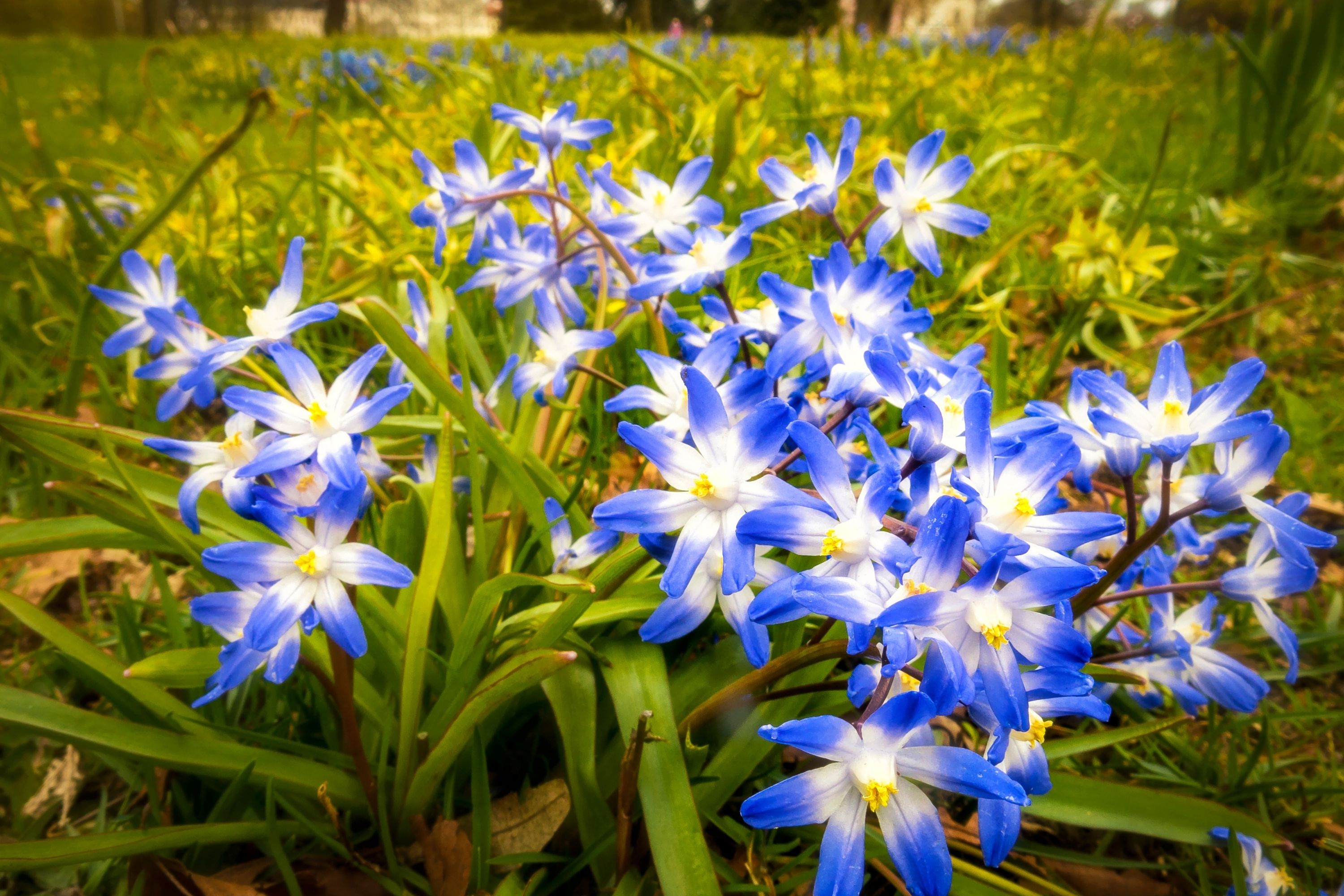Glory of the snow
(Scilla forbesii)

Description
Scilla forbesii is a small bulbous plant that belongs to the Asparagaceae family. It is native to South Africa and is widely cultivated in gardens around the world for its stunning blue flowers that bloom in early spring. The plant is also known by its common names, which include Forbes' squill, blue squill, and bluebell. Description Scilla forbesii grows from a small bulb that is about 1-2 cm in diameter. The bulb produces a rosette of basal leaves that are narrow and strap-like, measuring 10-20 cm in length and 2-3 mm in width. The leaves are a light green color and are often tinged with purple. The flowering stem of Scilla forbesii emerges from the center of the rosette of leaves and can reach a height of 15-20 cm. The stem is slender and bears a spike of up to ten bell-shaped flowers. The flowers are a striking blue color and are about 2-3 cm in length. Each flower has six petals that are fused at the base, forming a tube-like structure. Cultivation Scilla forbesii is easy to grow and care for, making it a popular choice for gardens and rockeries. The plant prefers a well-drained soil that is rich in organic matter and slightly acidic to neutral in pH. It thrives in full sun or partial shade and is tolerant of drought once established. The bulbs of Scilla forbesii should be planted in the fall, at a depth of about 5 cm. They should be spaced about 5-10 cm apart, depending on the desired effect. The plant will grow and flower in the spring, and the foliage will die back in the summer. Propagation Scilla forbesii can be propagated by seed or by dividing the bulbs. To propagate by seed, collect the ripe seed capsules in early summer and sow them immediately in a well-drained seed-raising mix. Keep the seed trays in a sheltered spot and water regularly. The seedlings should emerge within a few weeks. To propagate by bulb division, wait until the foliage has died back in the summer and then carefully dig up the bulbs. Separate the individual bulbs and replant them at the desired spacing. Water well and ensure that the new bulbs are kept moist until they become established. Pests and Diseases Scilla forbesii is relatively pest and disease-free. However, like all bulbs, it can be susceptible to bulb rot if the soil is too moist or poorly drained. To prevent bulb rot, ensure that the soil is well-drained and do not overwater the plant. Uses Scilla forbesii is primarily grown for its ornamental value. The striking blue flowers are a welcome sight in early spring and can be used to add color to rockeries, borders, and containers. The plant is also useful for naturalizing in grassy areas, where it will spread slowly over time. In addition to its ornamental value, Scilla forbesii has some medicinal uses. The bulbs contain a compound called scillaren, which has diuretic properties and has been used to treat heart failure and other conditions. Conclusion Scilla forbesii is a beautiful and easy-to-grow plant that is well-suited to a wide range of garden settings. With its striking blue flowers and narrow foliage, it is a welcome addition to any garden or rockery. As a plant expert, I would highly recommend Scilla forbesii to anyone looking for a low-maintenance, ornamental plant that is sure to impress.
Taxonomic tree:







